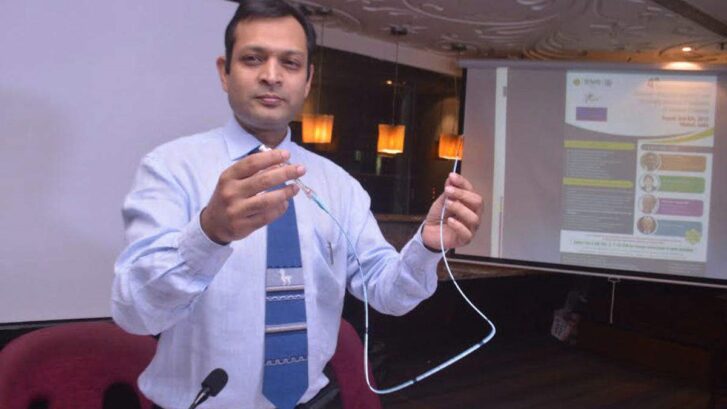Is varicose vein making it difficult for you to manage your daily activities?
Or are you troubled with recurrent varicose veins?
If yes, MOCA can be the solution you are looking for.
But what is this technique, and how can it help you?
Let’s understand!
What is Mechanochemical ablation (MOCA)?
For varicose veins, especially the recurring ones, the underlying cause should be managed permanently. And an effective solution is ablation, which destroys a vein permanently.
Mechanochemical ablation (MOCA) is a technique involving the use of sclerotherapy and mechanical trauma to ablate the varicose vein.
It is a comparatively newer, non-tumescent, and non-thermal ideal for individuals who cannot tolerate needles. MOCA is also an excellent option for mid-size varicose veins without multiple branches.
MOCA is a superior form of treatment as it involves a combination of altering the lining of the vein using a rotating wire and infusing a liquid sclerosant that effectively damages the vein wall.
The technique is painless, and the patient reports a feeling of a vibrating sensation. Besides, it is a comparatively shorter technique that may be finished within 20 minutes involving only a tiny anesthetic injection.
Your doctor will carry out the procedure under ultrasound guidance. They will introduce a thin catheter through a needle into the affected vein.
Now, the doctor will introduce a wire through the catheter. The wire is rotated at its tip and performs about 3500 revolutions when attached to an external device. This frequent rotation of the wire causes spasms of the vein.
Now, a chemical sclerosant solution is introduced through the catheter that destroys the inner lining of the vein. All this results in the permanent closing of the vein.
Once the closure of the vein is achieved, the doctor pulls back the catheter, and a small bandage is applied to the punctured area,
Advantages of MOCA
Some benefits of the procedure include:
- The safety and effectiveness of the procedure
- Reduced discomfort and pain
- The catheter does not generate heat, preventing the risk of skin and nerve damage
- Rapid return to normal activities
- Reduced risk of complications
Risks Of MOCA
The risks associated with the technique are minimal and include:
- Bleeding
- Blood clots
- Allergic reaction
- Infection
- Ulceration
Post-procedure Care
Your doctor may advise wearing compression stocking for a week after the procedure. They may recommend a follow-up ultrasound after a week or two after the procedure. The process is painless, and you can even drive to and from the hospital.


